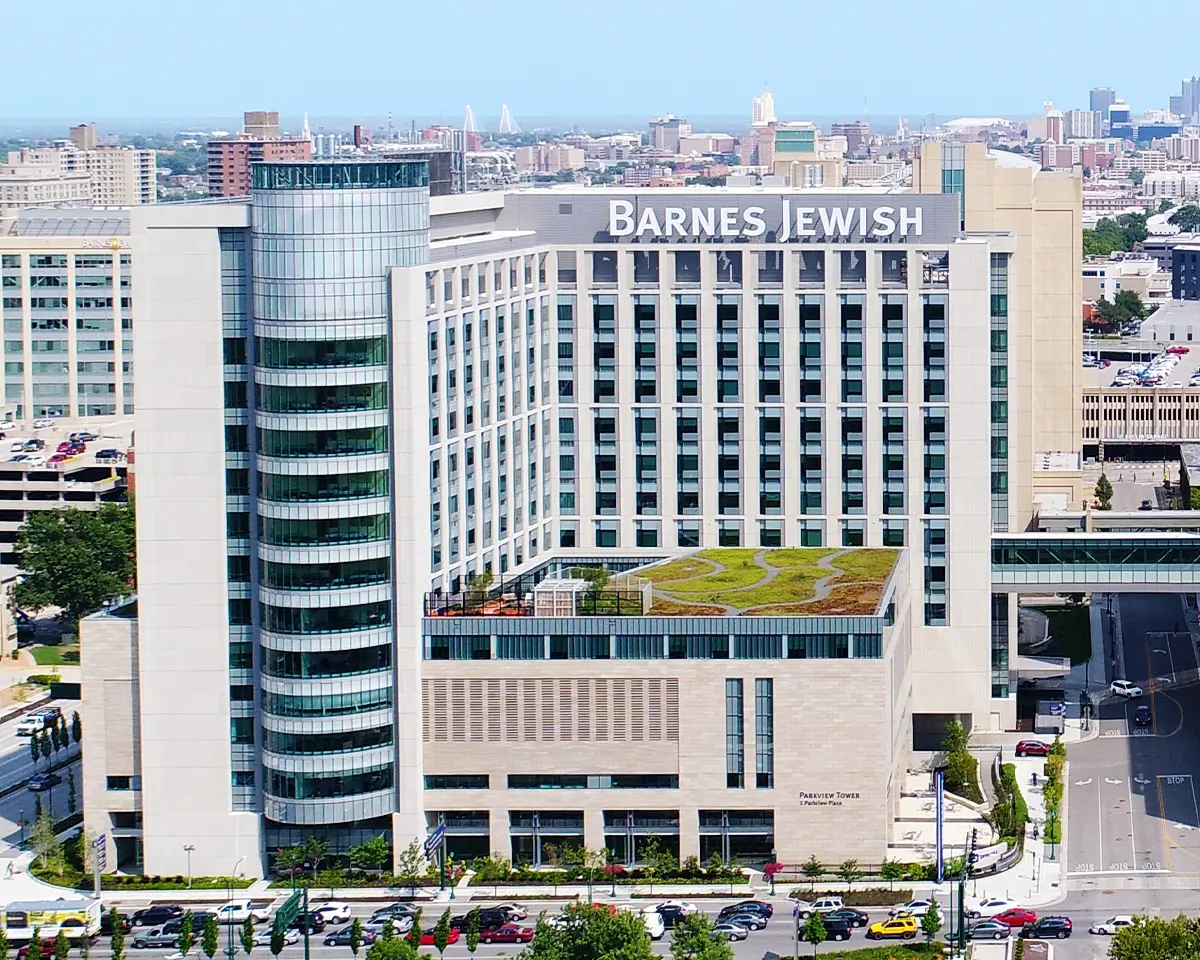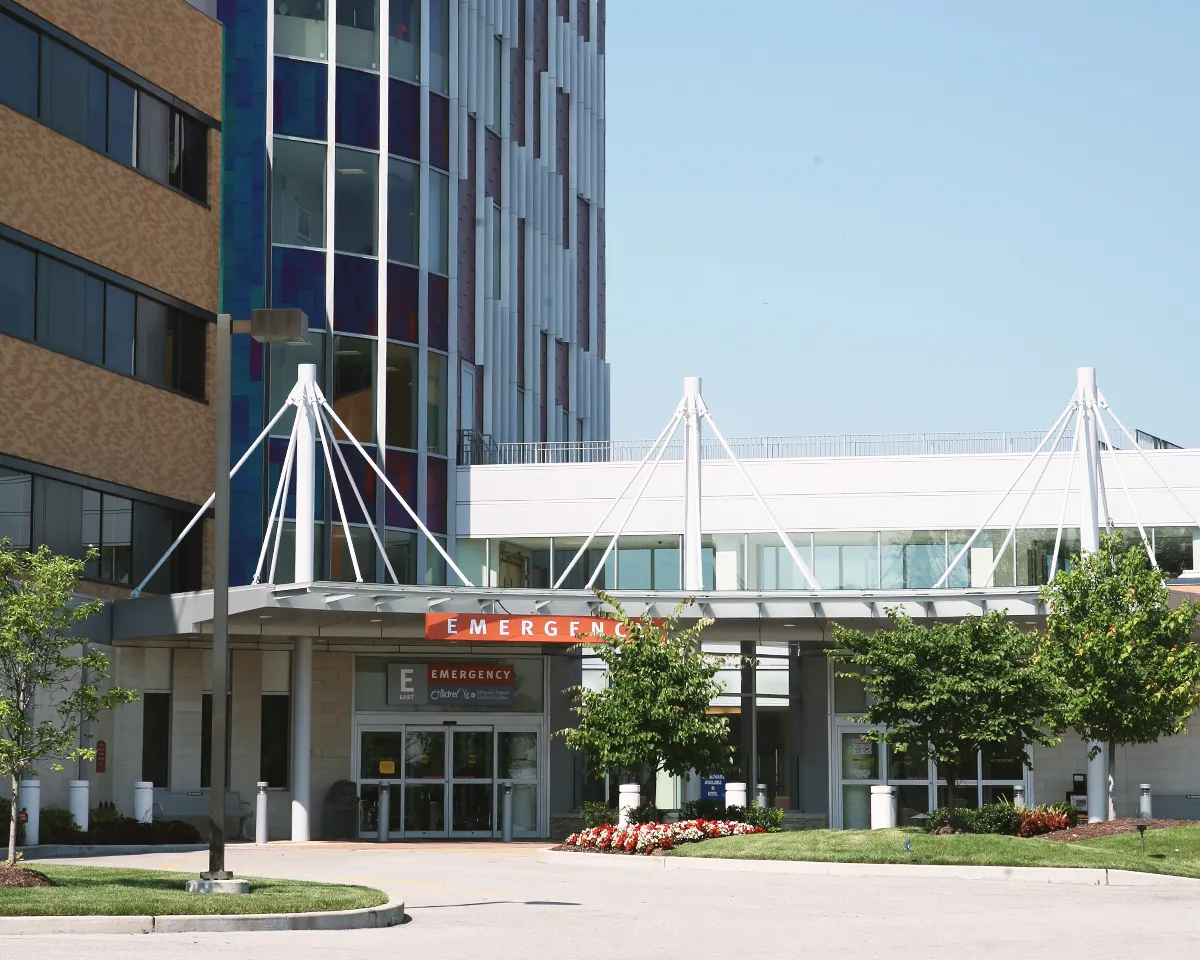Spinal Deformities
A spinal curve from scoliosis or kyphosis can raise a lot of questions. Do I need surgery? Can I live the life I want? You deserve answers you can trust, which is why you should turn to us. World-renowned spine specialists deliver outstanding care, including surgical and non-surgical therapies.
BJC HealthCare works with Washington University physicians, BJC Medical Group, and providers across the region to deliver extraordinary care. Our experts deliver appropriate care that helps adults and children live their best possible quality of life. We use the latest methods to assess symptoms and tailor recommendations. For mild spinal curvature, therapy might not be necessary. People with a more severe curvature have access to every available treatment option.
We offer:
Trusted experts: Neurosurgeons and orthopedic surgeons specializing in complex spine conditions guide your care. Some doctors have decades of experience and maintain an international reputation for their contributions to the field. Our experience with thousands of patients helps us manage small details that lead to exceptional outcomes.
Advanced surgical procedures: You can count on us for sophisticated options that aren’t widely available if surgery is right for you or your child. Options include vertebral stapling, a newer pediatric technique that does not require post-procedure bracing. It helps many children avoid spinal fusion, which carries a risk of long-term complications. Explore the Spinal Disorders Center at St. Louis Children’s Hospital.
Connected and comprehensive care: Multiple specialists come together to ensure precise care for complex cases. The team includes electrophysiologists who make sure surgical instruments and hardware remain at a safe distance from your spinal cord during surgery. Physical therapists help optimize recovery and functioning.
Leadership: We were one of seven programs in North America to participate in a National Institutes of Health study of surgical and non-surgical adult scoliosis care. Our experts also train up-and-coming specialists through our spine surgery fellowship. These efforts enable us to share our knowledge to benefit patients worldwide.
We treat a broad range of spinal deformities, including:
- Congenital scoliosisYour spine curves sideways - it's present at birth because the vertebrae do not develop as expected.
- Degenerative (adult-onset) scoliosisA breakdown in the moving parts of your spine (facet joints and discs) causes an unusual sideways spinal curvature.
- Early onset scoliosisThis is a progressive spinal curvature in children younger than 10.
- Flatback syndromeThe natural curvature of the spine flattens out either in your upper spine, lower spine or both causing your torso to pitch forward.
- Round back (kyphosis)This is an unnatural outward curvature in your upper back vertebrae that creates a rounded appearance.
- Spinal arthritis (spondylosis)This condition causes ongoing pain due to wear and tear on the cartilage cushioning your spine. It can affect joints in your back or neck.
- SpondylolisthesisA forceful impact causes a vertebra to slip out of place, landing on your spine bone below, potentially injuring nerve tissue.
You may benefit from non-surgical therapies if the spinal curvature is mild or progressing slowly. We perform a thorough evaluation to determine whether this is the right course of care for you or your child.
Treatments include:
Surgery for spinal deformities relieves discomfort and protects against complications like breathing problems. We offer innovative alternatives to spinal fusion for pediatric scoliosis that support healthy spine development. Our experts also excel in adult procedures.
Types of scoliosis procedures we offer for pediatrics and adults include:
 Barnes-Jewish Hospital
Barnes-Jewish Hospital Missouri Baptist Medical Center
Missouri Baptist Medical Center
Schedule your appointment
Call (314) 362-9355 or (800) 392-0936 to schedule your appointment with a specialist.